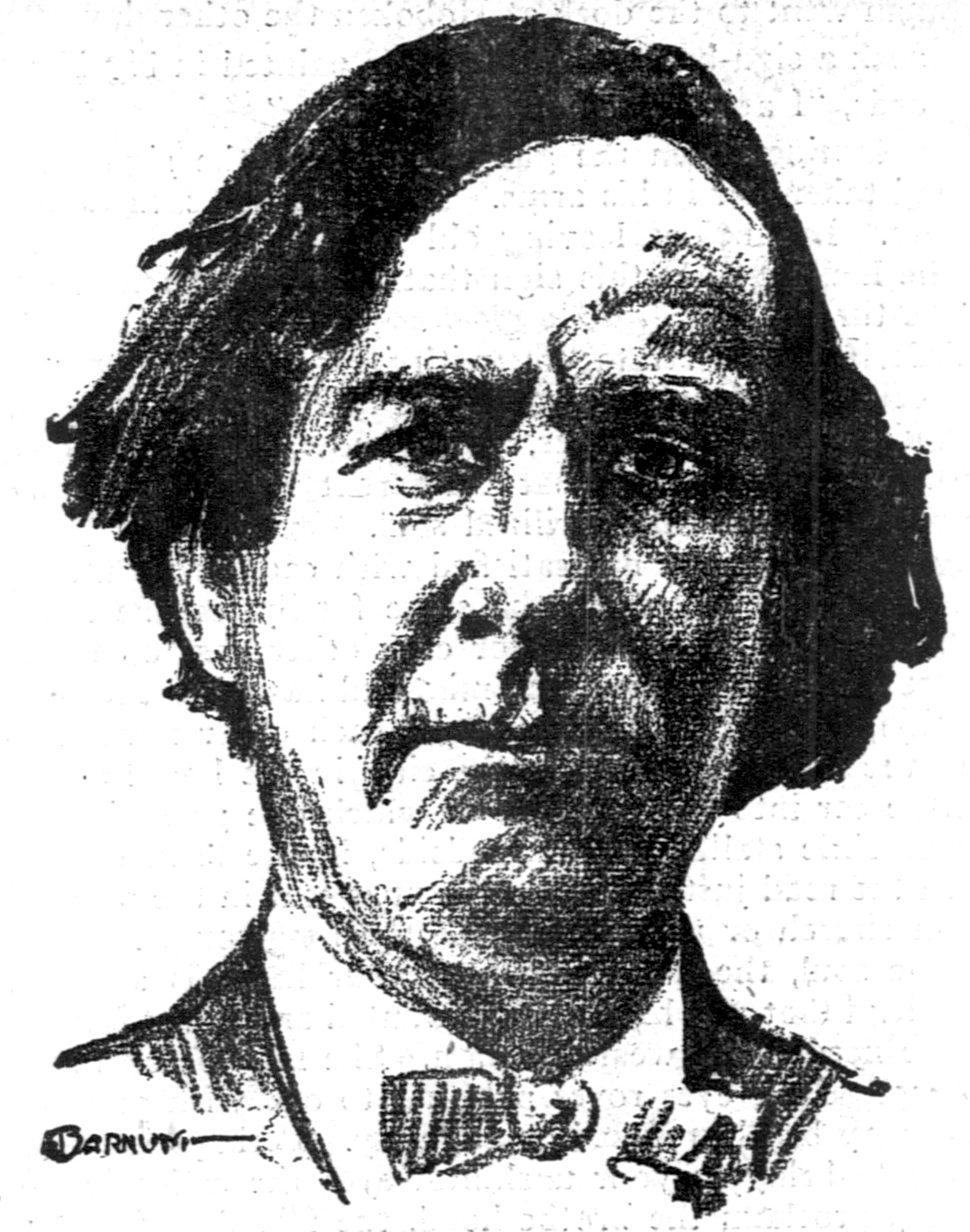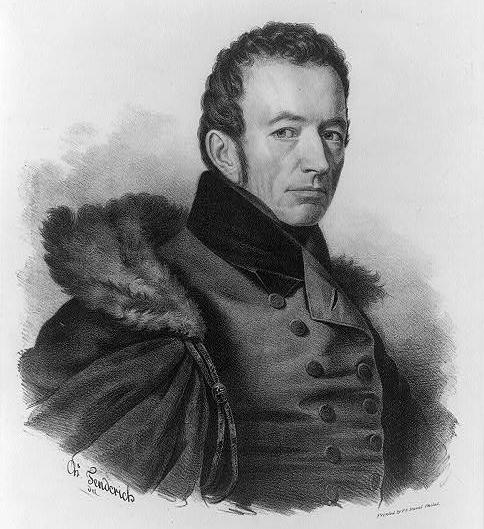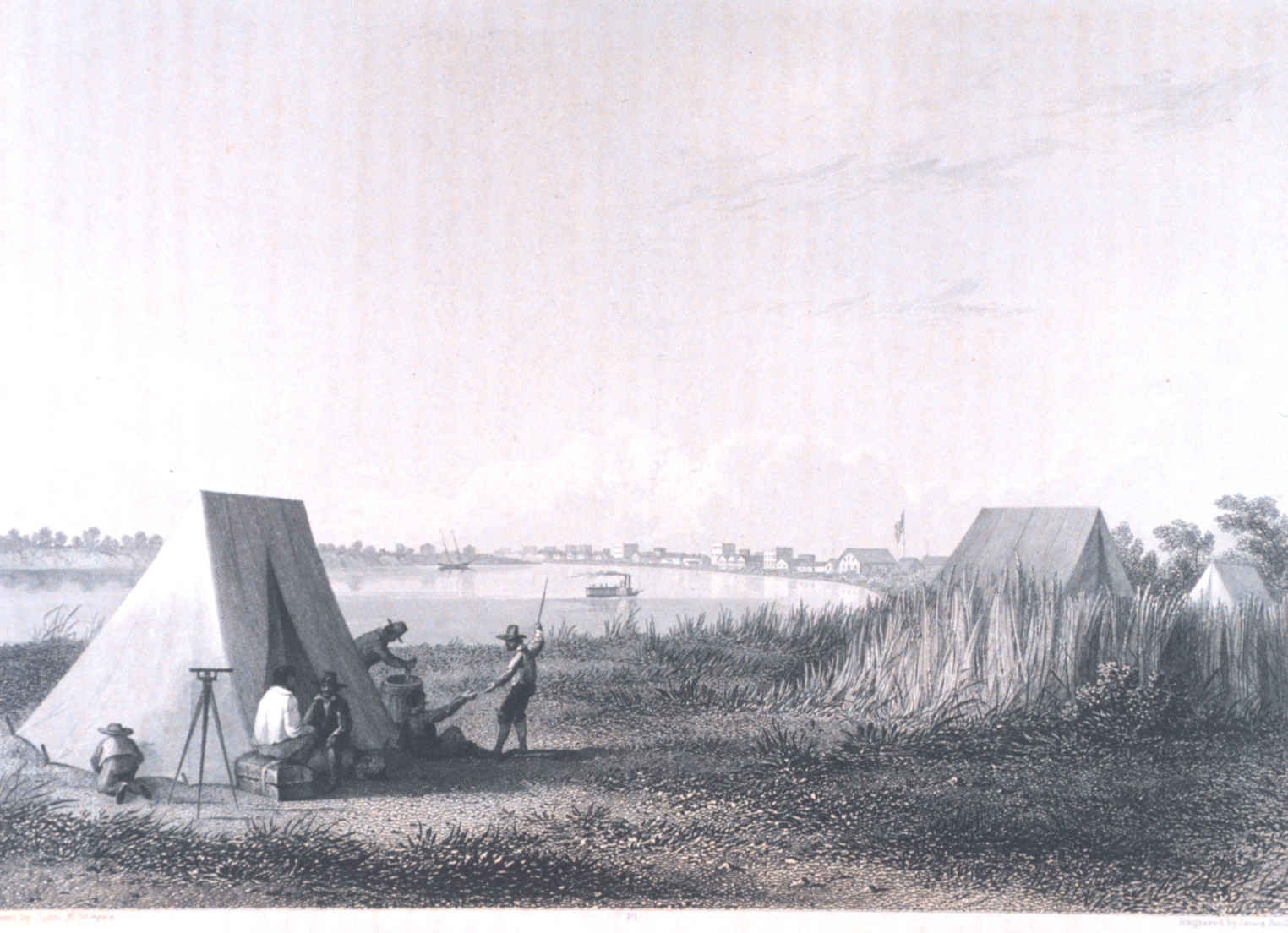|
Battle Of La Bolsa
The Battle of La Bolsa was a major event in the Cortina War, a series of armed confrontations between the milita of Mexican rancher Juan Cortina and elements of the United States Army and the Texas Rangers. The battle occurred on February 4, 1860, when Cortina's forces attacked the steamboat ''Ranchero'' on its way to Brownsville. Prelude La Bolsa, meaning "the pocket," was a northward loop of the Rio Grande, on the border of Hidalgo and Cameron counties. On February 4, 1860, the steamboat ''Ranchero'' was on its way to Brownsville, Texas, with soldiers from Ringgold Barracks on board to guard the boat's cargo. Texas Rangers also provided security by riding along the river's north bank. More Rangers and a United States cavalry troop from Fort Brown approached from the east. Battle As the ''Ranchero'' entered La Bolsa, Cortina's milita opened fire from the south bank. Those on board the ''Ranchero'' returned fire with their rifles and two cannons. Cortina prepared a second ... [...More Info...] [...Related Items...] OR: [Wikipedia] [Google] [Baidu] |
Harlingen, Texas
Harlingen ( ) is a city in Cameron County in the central region of the Rio Grande Valley of the southern part of the U.S. state of Texas, about from the coast of the Gulf of Mexico. The city covers more than and is the second-largest city in Cameron County, as well as the fourth-largest in the Rio Grande Valley. As of the 2020 census, the city had a population of 71,892. Harlingen is a principal city of the Brownsville–Harlingen metropolitan area, which is part of the larger Brownsville–Harlingen–Raymondville combined statistical area, included in the Matamoros–Brownsville metropolitan region. History Harlingen's strategic location at the intersection of U.S. Route 77 and U.S. Route 83, co-designated as Interstate 69 East and Interstate 2, respectively, in northwestern Cameron County, fostered its development as a distribution, shipping, and industrial center. In 1904, Lon C. Hill (a man of Choctaw ancestry) envisioned the Rio Grande as a commercial waterway. He ... [...More Info...] [...Related Items...] OR: [Wikipedia] [Google] [Baidu] |
Cameron County, Texas
Cameron County, officially the County of Cameron, is the southernmost county in the U.S. state of Texas. As of the 2020 census, its population was 421,017. Its county seat is Brownsville. The county was founded in 1848 and is named for Captain Ewen Cameron, a soldier during the Texas Revolution and in the ill-fated Mier Expedition. During the later 19th century and through World War II, Fort Brown was a US Army outpost here, stimulating the development of the city of Brownsville. Cameron County comprises the Brownsville– Harlingen, TX metropolitan statistical area, as well as the Brownsville–Harlingen– Raymondville combined statistical area, which itself is part of the larger Rio Grande Valley region. Geography According to the U.S. Census Bureau, the county has a total area of , of which are land and (30%) are covered by water. To the east, the county borders the Gulf of Mexico. Major highways * Interstate 2 * Interstate 69E/ U.S. Highway 77 * Interstate ... [...More Info...] [...Related Items...] OR: [Wikipedia] [Google] [Baidu] |
Mexico–United States Relations
Mexico and the United States have a complex history, with war in the 1840s and American acquisition of Texas, California and New Mexico. Pressure from Washington forced the French invaders out in the 1860s. The Mexican Revolution of the 1910s saw many refugees flee North, and limited American invasions. Other tensions resulted from seizure of American mining and oil interests. The two nations share a maritime and land border. Several treaties have been concluded between the two nations bilaterally, such as the Gadsden Purchase, and multilaterally, such as the 2019 United States–Mexico–Canada Agreement, replacing the 1994 NAFTA. Both are members of various international organizations, including the Organization of American States and the United Nations. Since the late nineteenth century during the regime of President Porfirio Díaz (1876–1911), the two countries have had close diplomatic and economic ties. During Díaz's long presidency, U.S. businessmen acquired agric ... [...More Info...] [...Related Items...] OR: [Wikipedia] [Google] [Baidu] |
1860 In Texas
Year 186 ( CLXXXVI) was a common year starting on Saturday (link will display the full calendar) of the Julian calendar. At the time, it was known as the Year of the Consulship of Aurelius and Glabrio (or, less frequently, year 939 ''Ab urbe condita''). The denomination 186 for this year has been used since the early medieval period, when the Anno Domini calendar era became the prevalent method in Europe for naming years. Events By place Roman Empire * Peasants in Gaul stage an anti-tax uprising under Maternus. * Roman governor Pertinax escapes an assassination attempt, by British usurpers. New Zealand * The Hatepe volcanic eruption extends Lake Taupō and makes skies red across the world. However, recent radiocarbon dating by R. Sparks has put the date at 233 AD ± 13 (95% confidence). Births * Ma Liang, Chinese official of the Shu Han state (d. 222) Deaths * April 21 – Apollonius the Apologist, Christian martyr * Bian Zhang, Chinese official and gener ... [...More Info...] [...Related Items...] OR: [Wikipedia] [Google] [Baidu] |
Battles In Texas
A battle is an occurrence of combat in warfare between opposing military units of any number or size. A war usually consists of multiple battles. In general, a battle is a military engagement that is well defined in duration, area, and force commitment. An engagement with only limited commitment between the forces and without decisive results is sometimes called a skirmish. The word "battle" can also be used infrequently to refer to an entire operational campaign, although this usage greatly diverges from its conventional or customary meaning. Generally, the word "battle" is used for such campaigns if referring to a protracted combat encounter in which either one or both of the combatants had the same methods, resources, and strategic objectives throughout the encounter. Some prominent examples of this would be the Battle of the Atlantic, Battle of Britain, and Battle of Stalingrad, all in World War II. Wars and military campaigns are guided by military strategy, whereas bat ... [...More Info...] [...Related Items...] OR: [Wikipedia] [Google] [Baidu] |
American Civil War
The American Civil War (April 12, 1861 – May 26, 1865; also known by other names) was a civil war in the United States. It was fought between the Union ("the North") and the Confederacy ("the South"), the latter formed by states that had seceded. The central cause of the war was the dispute over whether slavery would be permitted to expand into the western territories, leading to more slave states, or be prevented from doing so, which was widely believed would place slavery on a course of ultimate extinction. Decades of political controversy over slavery were brought to a head by the victory in the 1860 U.S. presidential election of Abraham Lincoln, who opposed slavery's expansion into the west. An initial seven southern slave states responded to Lincoln's victory by seceding from the United States and, in 1861, forming the Confederacy. The Confederacy seized U.S. forts and other federal assets within their borders. Led by Confederate President Jefferson Davis, ... [...More Info...] [...Related Items...] OR: [Wikipedia] [Google] [Baidu] |
Robert E
The name Robert is an ancient Germanic given name, from Proto-Germanic "fame" and "bright" (''Hrōþiberhtaz''). Compare Old Dutch ''Robrecht'' and Old High German ''Hrodebert'' (a compound of '' Hruod'' ( non, Hróðr) "fame, glory, honour, praise, renown" and ''berht'' "bright, light, shining"). It is the second most frequently used given name of ancient Germanic origin. It is also in use as a surname. Another commonly used form of the name is Rupert. After becoming widely used in Continental Europe it entered England in its Old French form ''Robert'', where an Old English cognate form (''Hrēodbēorht'', ''Hrodberht'', ''Hrēodbēorð'', ''Hrœdbœrð'', ''Hrœdberð'', ''Hrōðberχtŕ'') had existed before the Norman Conquest. The feminine version is Roberta. The Italian, Portuguese, and Spanish form is Roberto. Robert is also a common name in many Germanic languages, including English, German, Dutch, Norwegian, Swedish, Scots, Danish, and Icelandic. It can be use ... [...More Info...] [...Related Items...] OR: [Wikipedia] [Google] [Baidu] |
Fort Brown
Fort Brown (originally Fort Texas) was a military post of the United States Army in Cameron County, Texas, during the latter half of the 19th century and the early part of the 20th century. Established in 1846, it was the first US Army military outpost of the recently annexed state. Confederate Army troops stationed there saw action during the American Civil War. In the early 20th century, it was garrisoned in relation to military activity over border conflicts with Mexico. Surviving elements of the fort were designated as a National Historic Landmark in 1960. Early years In 1846, Captain Joseph K. MansfieldBauer, K.J., 1974, ''The Mexican War, 1846–1848'', New York: Macmillan, directed the construction of a star-shaped earthwork for 800 men called "Fort Texas" on the northern side of the Rio Grande, "by the order from General acharyTaylor to command the city of Matamoros" south of the river.Ashcroft, A.C., 1963, "Fort Brown, Texas, in 1861," in ''Texas Military History'' ... [...More Info...] [...Related Items...] OR: [Wikipedia] [Google] [Baidu] |
Hidalgo County, Texas
Hidalgo County (; ) is located in the U.S. state of Texas. The county seat is Edinburg and the largest city is McAllen. The county is named for Miguel Hidalgo y Costilla, the priest who raised the call for Mexico's independence from Spain. It is located in the Rio Grande Valley of South Texas and is one of the fastest-growing counties in the United States. As of the 2020 census, the population of Hidalgo County was 870,781, making it the eighth-most populous county in Texas. Hidalgo County is designated by the U.S. Census Bureau as the McAllen-Edinburg-Mission metropolitan statistical area, which itself is part of the McAllen-Edinburg-Mission-Rio Grande City, Texas combined statistical area with neighboring Starr County. With a population that is 91.9% Hispanic as of 2020, it is Texas' second-most populous majority-Hispanic county and the fifth-largest nationwide. It is also the largest county which is over 90% Hispanic. It is also the southernmost landlocked county in th ... [...More Info...] [...Related Items...] OR: [Wikipedia] [Google] [Baidu] |
Juan Cortina
Juan Nepomuceno Cortina Goseacochea (May 16, 1824 – October 30, 1894), also known by his nicknames Cheno Cortina, the Red Robber of the Rio Grande and the Rio Grande Robin Hood, was a Mexican rancher, politician, military leader, outlaw and folk hero. He was an important caudillo, military general and regional leader, who effectively controlled the Mexican state of Tamaulipas as governor. In borderlands history he is known for leading a paramilitary mounted Mexican Militia in the failed Cortina Wars. The "Wars" were raids targeting Anglo-American civilians whose settlement Cortina opposed near the several leagues of land granted to his wealthy family on both sides of the Rio Grande. Anglo families began immigrating to the Lower Rio Grande Valley after the Mexican Army was defeated by the Anglo-Mexican rebels of the Mexican State of Tejas, in the Texas Revolution. From 1836 to 1848 when Cortina was 12–24 years old, parts of the Cortina Grant North of the Rio Grande Ri ... [...More Info...] [...Related Items...] OR: [Wikipedia] [Google] [Baidu] |
Rio Grande
The Rio Grande ( and ), known in Mexico as the Río Bravo del Norte or simply the Río Bravo, is one of the principal rivers (along with the Colorado River) in the southwestern United States and in northern Mexico. The length of the Rio Grande is . It originates in south-central Colorado, in the United States, and flows to the Gulf of Mexico. The Rio Grande drainage basin (watershed) has an area of ; however, the endorheic basins that are adjacent to and within the greater drainage basin of the Rio Grande increase the total drainage-basin area to . The Rio Grande with Rio Grande Valley (landform), its fertile valley, along with its tributaries, is a vital watersource for seven US and Mexican states, and flows primarily through arid and semi-arid lands. After traversing the length of New Mexico, the Rio Grande becomes the Mexico–United States border, between the U.S. state of Texas and the northern Mexican states of Chihuahua (state), Chihuahua and Coahuila, Nuevo León a ... [...More Info...] [...Related Items...] OR: [Wikipedia] [Google] [Baidu] |
Brownsville, Texas
Brownsville () is a city in Cameron County in the U.S. state of Texas. It is on the western Gulf Coast in South Texas, adjacent to the border with Matamoros, Mexico. The city covers , and has a population of 186,738 as of the 2020 census. It is the 139th-largest city in the United States and 18th-largest in Texas. It is part of the Matamoros–Brownsville metropolitan area. The city is known for its year-round subtropical climate, deep-water seaport, and Hispanic culture. The city was founded in 1848 by American entrepreneur Charles Stillman after he developed a successful river-boat company nearby. It was named for Fort Brown, itself named after Major Jacob Brown, who fought and died while serving as a U.S. Army soldier during the Mexican–American War (1846–1848). As a county seat, the city and county governments are major employers. Other primary employers fall within the service, trade, and manufacturing industries, including a growing aerospace and space transpor ... [...More Info...] [...Related Items...] OR: [Wikipedia] [Google] [Baidu] |




